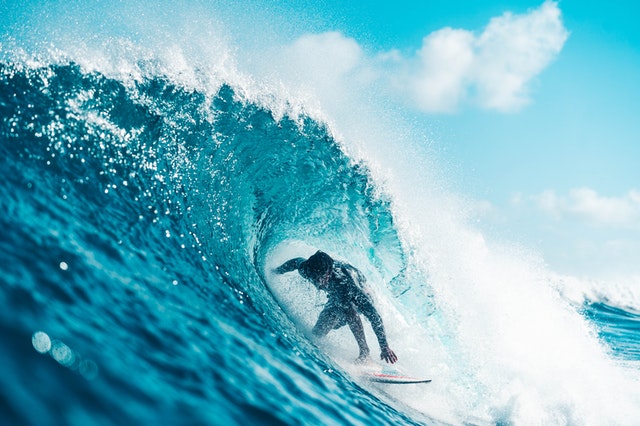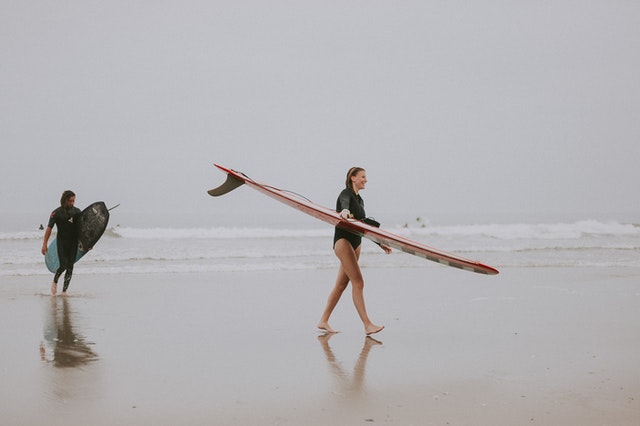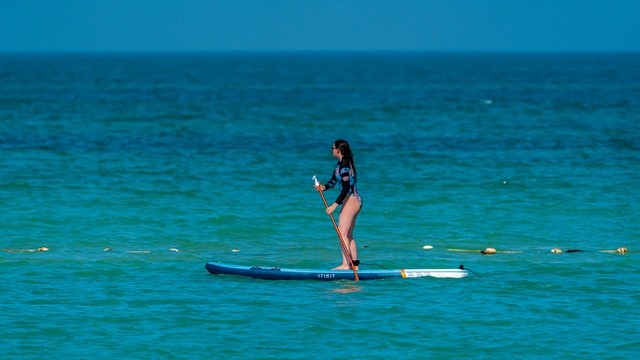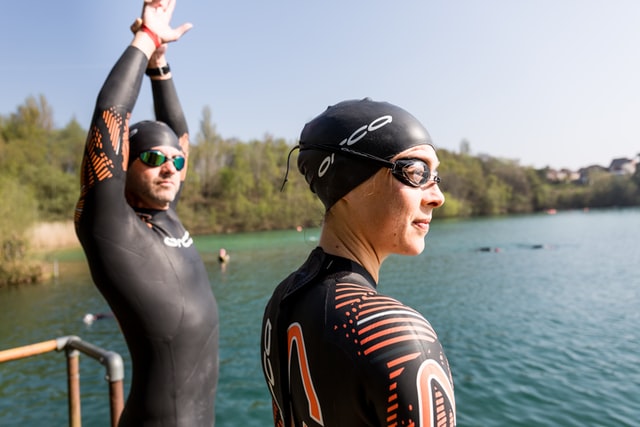
Not only is surfing an exhilarating sport that gets you out and active, but it also has many health benefits. Surf regularly, and you will reap the cardiovascular health benefits of hitting the waves. It’s a full-body workout on water. One that thousands of people in Ireland enjoy every chance they get.
With more than 3000 kilometres of coastline, it’s no surprise that Ireland is such a popular surf spot. We’ve even hosted championships thanks to the world-famous waves of Donegal. If you are wondering where to surf, there is no shortage of surf options. You will find suitable waves from Inchydoney in Cork to Enniscrone in Sligo and surf schools to boot.
Surfing safely means understanding and using the right surfing equipment. Below, we’ve put together a guide for new surfers to help you pick the right products for you.
Essential Product Guide for New Surfers
1. Surfboards

Have you tried out surfing and rented surfboards for lessons on holiday? Now that you’ve caught the bug for catching waves and you’re serious about surfing, it’s time to buy your own. There’s nothing like owning your very own board that you can take out whenever you like. Here’s what to look for in a surfboard.
For beginners, we would always advise looking for a board that will make things easier for you. Look for a wide board with a rubber textured surface for better grip and balance. When it comes to stability, the key areas to look at are the fins and tail. A broad tail and two to three fins will give you better stability. More fins on a surfboard give you more control and manoeuvrability.
2. SUP Boards

SUP boards, aka Stand Up Paddleboards, are perfect if not ready for surfboard yet. They are a great way of building confidence on the water, as well as core and upper body strength. Both of which are essential for surfing.
One option for beginners is to get an inflatable SUP board (iSUP). iSUPs typically come with a kit, including a bag for easy transport, a paddle, pump, leash, fin and repair kit. A SUP with a mid-width around 32” will serve you best for stability, as will a broad tail. Look for a SUP board with a handle. A small detail that will help you get your board in the water more easily. SUP boards usually come with one fin. A re-attachable fin can be a bonus as you will be able to replace a lost or damaged fin. Lastly, look for a good grip surface. Stand up paddling is a slippy business!
3. Wetsuits

There are wetsuits for every season, which is just as well for surfing in Ireland, where the weather is unpredictable. As a new surfer, you will need a wetsuit that keeps you warm. Especially your core area. In turn, this will allow you to practice on (and in) the water for longer. A full-body suit will not only give you a layer of warmth but will also protect your arms and legs from the knocks and bumps that come with sea surfing. Knee padding can be helpful for new surfers too. Neoprene is the standard material for good wetsuits, favoured for its buoyancy, warmth and stretch.
A wetsuit should feel snug but not restrictively tight. You need to be able to use your arms for paddling out, but a little snugness when doing this is fine. If you plan to surf mainly in one area of Ireland, get to know the water there. Some areas are colder and will require a thicker wetsuit for all seasons.
Shop Mens Wetsuits
Shop Womens Wetsuits
4. Dryrobes
Shedding a wetsuit after surfing takes practice; not freezing and retaining your modesty at the same time takes skill. But, not anymore! Enter the dryrobe; a must-have for any surfer and wild water lover. Rather than wrapping a towel around yourself and hoping it stays in place, pop on a dryrobe and get changed.
Dryrobes come in two main styles. The first is a towel poncho with arms and hood. Towel dryrobes are made from super-soft cotton that keeps you warm whilst you dry and dress inside it. The second dryrobe style is the Dryrobe Advance Long Sleeve. A weatherproof option that zips up at the front and wind and waterproof. The lambswool lining is extra insulating, giving you extra warmth as change. Weatherproof dryrobes are a handy option for when you are taking a break, too, keeping you warm between surfs.
5. Surf Shoes
The reality of surfing in Ireland is that you will always be cold water surfing. That means protecting yourself from the colder elements is a must. With your body snug inside your wetsuit, you will notice how quickly your feet get cold in the water. You will enjoy surfing better with feet that aren’t numb with cold, so surf boots or shoes will help.
Surf shoes also give an extra layer of protection against rocks and shingle as you enter and exit the sea. Like wetsuits, surf shoes (aka wetsuit boots) are made from flexible neoprene. The ideal surf shoe will have extra grip on the sole like a layer of rubber reinforcement. For additional support, look for a surf show that offers ankle and achilles protection. Like in any sport, it’s essential to protect yourself from potential injury. Like your wetsuit, a surf shoe should be snug but not tight. Surf shoes can be hard to take off, so look for zipped boots or surf shoes with a toggle fastening.
6. Rash Vest
Rash vests add an extra layer of protection and comfort for surfers and are highly recommended. These lightweight long and short sleeve tops are designed to be worn beneath your swimsuit. The fit should be snug, so you stay flexible in the water.
As the name suggests, the purpose of a rash vest is to protect you from rashes that can sometimes be caused by chafing and seawater. However, rash vests are also a helpful barrier between you and the sun’s harmful UV rays. So much so that they can be used alone as a sun protector. They are not an alternative to wetsuits, though and will not protect you from cold water. Choose a rash vest with SPF 50 protection and fast-drying qualities.
7. Travel Rax Systems
Unless you are lucky and live in a home that backs onto the beach, you will need to consider transport. Lugging a surfboard or SUP to the beach and back is best done by car. Surfboards are 8 to 9 feet long, so the car roof is the practical and safer way to transport them.
If you already have a roof rack installed on your car, you will need some high-quality roof rack straps. These are sometimes referred to as tie-downs. Use these straps to secure your board or boards to the roof rack for travel. Most roof rack straps come with buckles to lock everything in place.
Fear not if your car has no roof rack; it is still possible to safely transport surfboards. Here’s how – Rap Rax or Soft Rax. These cleverly designed temporary roof racks are specifically for surfers. They come with padded rests that are attached to webbing straps. The straps easily attach to your car through the doors, and the pads prevent scratching. Soft rax are portable too, meaning you can easily switch to another vehicle when surfing with friends.
The Edge Sports Shop Surfing Department contains everything you need for adults or kids to get ready for your next surfing adventure. Browse our online surf shop for all our wetsuits, bodyboards, SUP boards, Dryrobes, Surfboards and much more.



